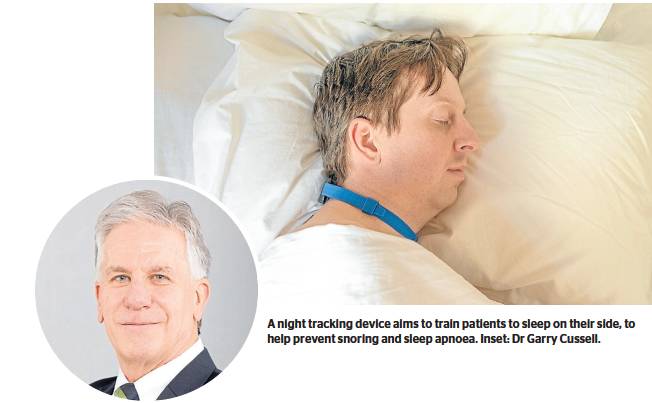A program for sleeping easier at night
Chronic snoring and associated sleep disturbance is no laughing matter. An estimated 60 per cent of Australians snore, with the incidence and intensity escalating from age 40.
It leaves people vulnerable to serious health issues such as oxygen deprivation to the brain, impaired circulation, heart and lung disorders, as well as stress, depression and anxiety.
At its extreme, snoring can devastate lives
– not just the snorer’s but that of their sleep partner and others in the household.
‘‘Snoring and sleep apnoea [where breathing is repeatedly obstructed, disrupting sleep] can severely impact intimate relationships, especially if couples decide they need to sleep apart because of the noise,’’ says Sydney physician Dr Garry Cussell.
Dr Cussell has 19 years’ experience in laser technology, and has worked with an in-house research and development team at Specialist Clinics of Australia to develop the SleepTight program, launched in 2012, for snoring and sleep apnoea. It is a holistic program that combines laser treatment with behavioural monitoring and modification protocols.
‘‘For many snorers, work performance is another critical issue because they wake feeling drained and are not operating at capacity throughout the day,’’ he says. ‘‘This causes disruption in the workplace and can even put jobs at risk. Snorers’ social relationships may also suffer. People may lack the energy to go out and ‘engage’. Life as a whole can become very fraught.’’ Most often, snoring occurs when the soft palate at the back of the throat relaxes and hangs down, blocking the airway and vibrating loudly when a person tries to inhale. The SleepTight protocol uses comfortable laser treatments on the soft palate to contract tissue fibres and stimulate collagen production, Dr Cussell says. Treatment aims to lift and tighten the lax tissue at the back of the throat to prevent it from blocking the airway during sleep – the main cause of snoring and sleep apnoea.
‘‘Initially three laser treatments are performed over four weeks, but for ongoing results a maintenance treatment is needed roughly every six months,’’ he says.
Laser treatments are not a fix-all – behavioural modification is a crucial element of the SleepTight program. ‘‘A small device worn at the back of the neck records sleep data and trains patients to sleep on their side to help prevent snoring and sleep apnoea,’’ the doctor says. ‘‘For instance, when a chronic snorer sleeps on their back for too long, and the tongue as well as the soft palate blocks the airways, the device vibrates to stir the patient to change their sleep position.
‘‘Achieving the desired patterns can take time and requires compliance for best results. Information about patients’ sleep habits throughout a night can be downloaded from the device for us to analyse and evolve the program accordingly.’’
During consultations, patients are educated about lifestyle changes that facilitate better results, such as reducing alcohol intake, which contributes to snoring.
‘‘Not only do patients feel better with SleepTight but they look better,’’ says Dr Cussell. ‘‘It’s when we have quality sleep that we rest, restore and rejuvenate.
‘‘We’ve delivered more than 4800 SleepTight treatments for snoring with a 93 per cent success rate with clients who have complied with the entire program.’’
Patients come from across the board, he says, including those whose work is affected by fatigue, as well as couples whose relationship is affected.
Any surgical or invasive procedure carries risk. Before proceeding, you should seek a second opinion from an appropriately qualified health practitioner.
‘It’s when we have quality sleep that we rest, restore and rejuvenate.’
Dr Garry Cussell
